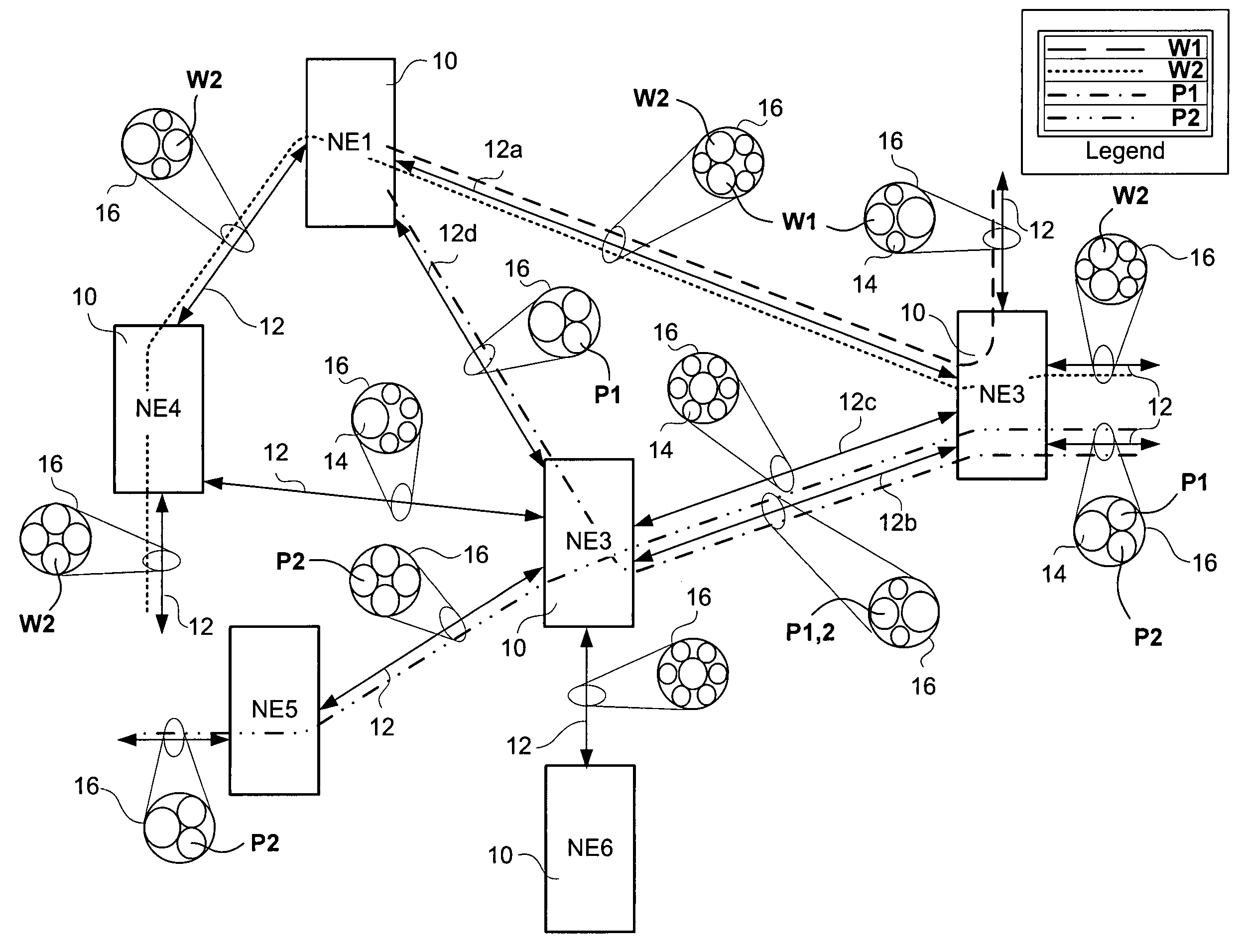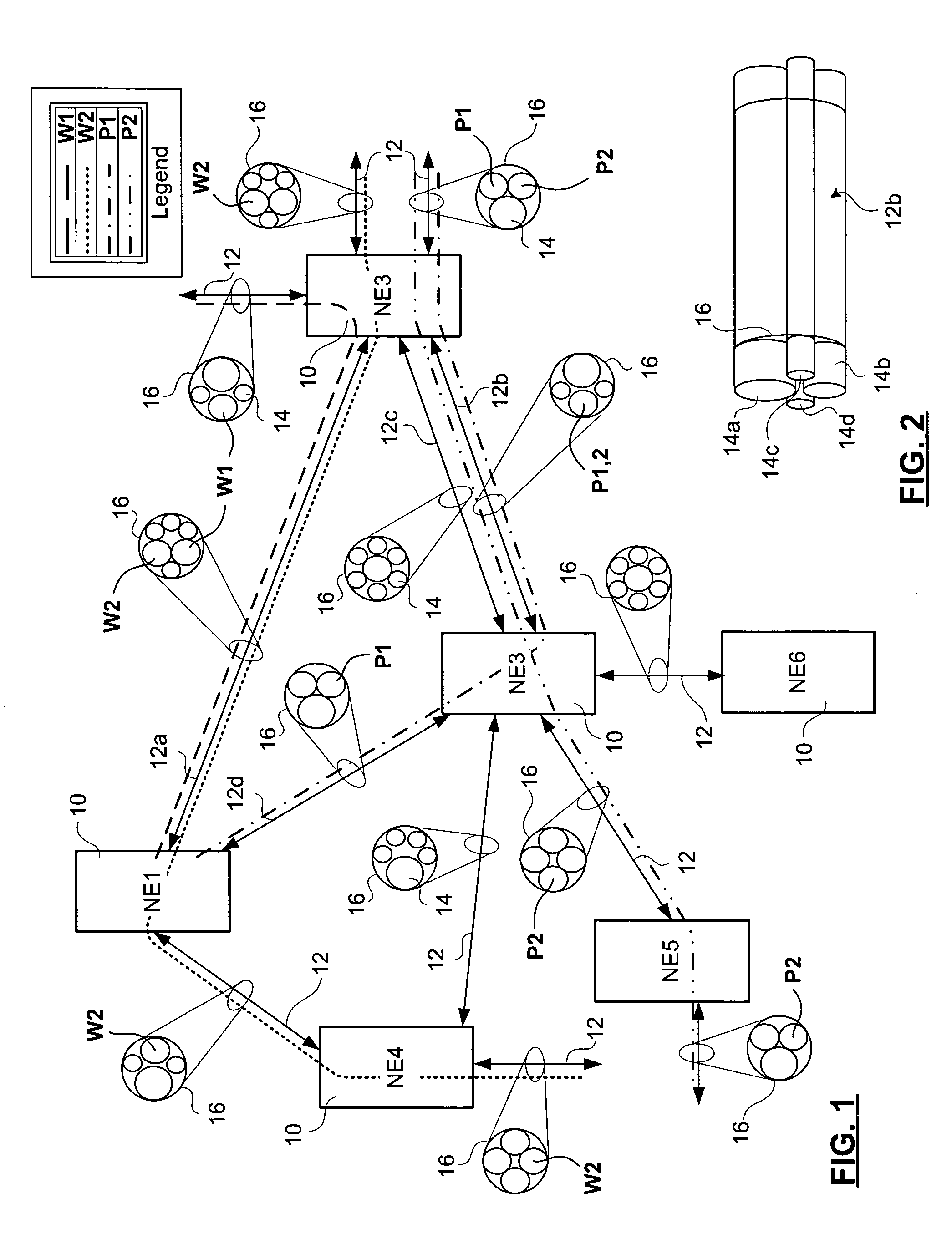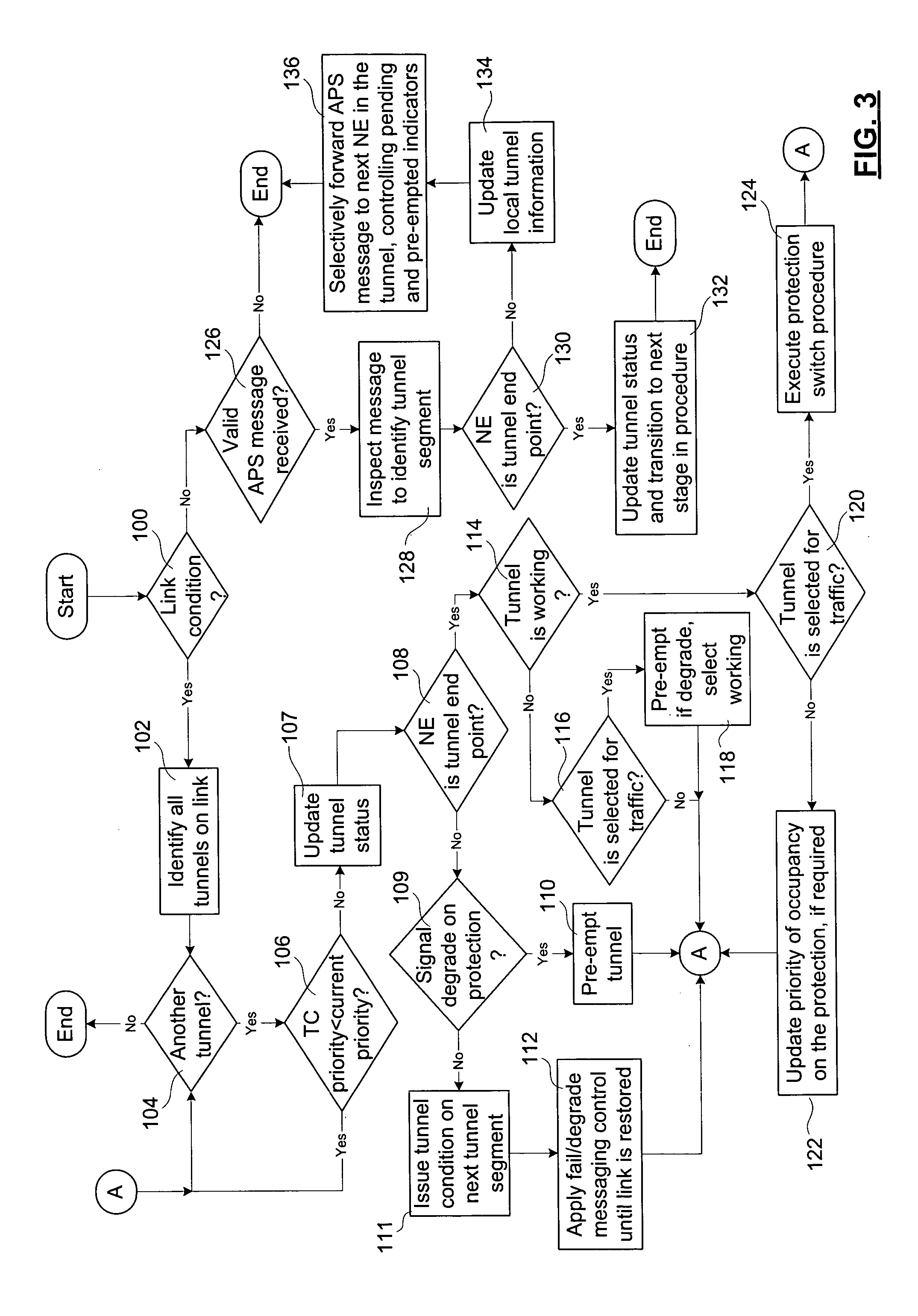Method and apparatus for protection switch messaging on a shared mesh network
- Summary
- Abstract
- Description
- Claims
- Application Information
AI Technical Summary
Benefits of technology
Problems solved by technology
Method used
Image
Examples
Embodiment Construction
[0035] The invention provides a messaging system and distributed processing scheme that permit protection switching on shared mesh networks.
[0036]FIG. 1 schematically illustrates a portion of an optical network in which the invention may be deployed. The portion of the optical network includes six NEs 10 (NE1, NE2, NE3, NE4, NE5, NE6). The optical network is of a mesh topology. The NEs are interconnected in a generally unconstrained manner, and as such is neither a ring, nor a linear deployment. The mesh is of a bidirectional type wherein each optical fiber span that connects a first NE to a second is paired with an optical fiber span (providing equal data transport capacity) that interconnects the second NE to the first.
[0037] The NEs 10 exchange data over bidirectional (i.e. full duplex) links 12 (specific bidirectional links between the identified NEs 10 are identified as 12a,b,c,d). Each bidirectional link 12 provides a data transport capacity that involve one or more waveleng...
PUM
 Login to View More
Login to View More Abstract
Description
Claims
Application Information
 Login to View More
Login to View More - R&D
- Intellectual Property
- Life Sciences
- Materials
- Tech Scout
- Unparalleled Data Quality
- Higher Quality Content
- 60% Fewer Hallucinations
Browse by: Latest US Patents, China's latest patents, Technical Efficacy Thesaurus, Application Domain, Technology Topic, Popular Technical Reports.
© 2025 PatSnap. All rights reserved.Legal|Privacy policy|Modern Slavery Act Transparency Statement|Sitemap|About US| Contact US: help@patsnap.com



